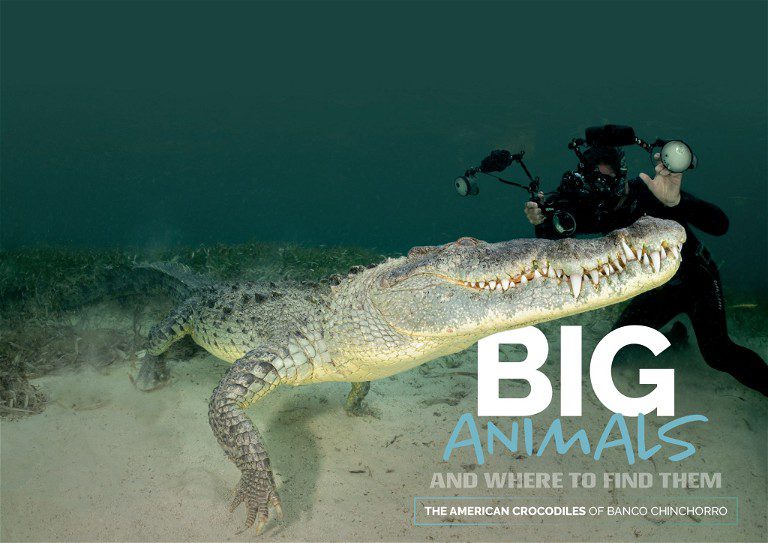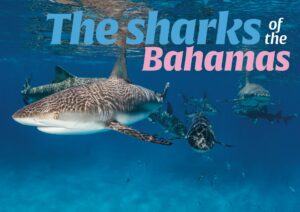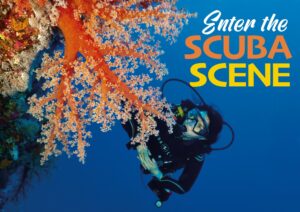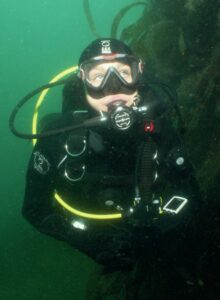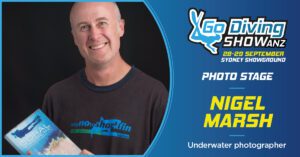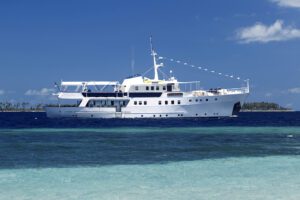Don Silcock’s pursuit of unusual and compelling photo-opportunities has led him on some interesting journeys over the years, but few come close to the raw excitement of photographing the American crocodiles of Mexico’s Banco Chinchorro!
Photographs by Don Silcock
Acousin of our hyper-dangerous saltwater crocodile, the less well-known American crocodile are not considered to be aggressive to humans and only a few (unverified) cases of fatal attacks have been reported. As its common name suggests, Crocodylus acutus can be found all the way from the Everglades on the southern tip of Florida, throughout the Caribbean and Central America, down into the northern end of South America in the countries of Ecuador, Columbia and Venezuela. But the best place for reliable and up-close underwater encounters with them is Banco Chinchorro in the south-east of Mexico, near the border with Belize.
Banco Chinchorro
Although hardly a household name… Banco Chinchorro is, in fact, one of the largest coral atolls in the Northern hemisphere and a UNESCO Biosphere Reserve.
Covering an area of almost 800 km², and located some 35km offshore, the reefs of Banco Chinchorro are very healthy and a real joy to dive.
But if it is the crocodiles you’re after, Cayo Centro is where you need to be… and while just under 6 km² in size, Cayo Centro is the largest of the three islands on the atoll and is home to a permanent estimated population of between 300 to 500 American crocodiles.
It also hosts a small seasonal population of local fishermen who have built a scattering of about ten huts on stilts, called palafitos, above the shallow waters of the lagoon on the east shore of the island and a similar number onshore called cabañas.
Quite how and when the crocodiles took up residence is not clear, but the dense mangroves of Cayo Centro offer the perfect habitat for them, with the rich waters around the island providing plenty of sustenance!
The crocodiles and the fishermen have an almost symbiotic relationship, tolerating each other’s presence in this remote location with the main signal for interaction being the noise of the chopping tables.
The fishermen fillet their catches on tables above the lagoon at the palafitos and at the water’s edge at the cabañas and the crocodiles will immediately gather when they hear the knives on the chopping boards.
For the crocodiles it’s snack time, while for the fishermen it is automated waste disposal.
How it works…
In-water encounters with the American crocodiles of Banco Chinchorro are done on snorkel as it is too shallow for scuba near the palafitos, plus it’s easier to manoeuvre when unencumbered. Positioning and visibility are the key to safe encounters and our palafito had some prime real estate just in front of its main porch in the form of a large sandy patch, that stretches out to the left of the hut.
Most of the lagoon has a rich coating of seagrass on the bottom, which the crocodiles blend in perfectly with when they submerge, making them hard to spot from the surface.
The sandy patch makes it very easy to see who/what is there, and the basic concept is to keep the humans on the sandy patch and the crocodiles on the seagrass…
By mooring the boat moored alongside the palafito, one direction is blocked, and the sandy patch means that any crocodiles sneaking in can be spotted and by feeding them from the front of the boat the ‘encounter zone’ is quite well defined and controllable! The actual in-water control is done with a wooden stick, albeit a large one… but a stick none the less. It is used by the wrangler to warn and calm the crocodile when it gets excited or aggressive and as a vertical barrier if it advances on to the sand. Despite my initial doubts on its usefulness, it turned out to be remarkable effective!
Eyeball to eyeball
Of course, all those eminently sensible logistics were far from mind as the time came to get in the water for the first encounter and I was very nervous as I descended the ladder at the back of the boat that first time. Then, suddenly in front of you is a serious-looking piece of reptilian hardware that is watching you as intently as you are watching it – ‘inscrutable’ is the word that comes to mind…
Underwater encounters with big animals are rarely if ever static – they move, often constantly and occasionally extremely fast. Whereas American crocodiles remain completely still, but with a coiled-up kinetic energy that is unleashed when they attack. The problem is that there is virtually no way of knowing when they will attack, so there is an intense tension as you manoeuvre closer to get good images knowing that should that trigger happen you are very reliant on that wooden stick and the reaction time of the crocodile wrangler.
Final words…
Is it dangerous? Probably and possibly are the best descriptors as there is no doubt that they could inflict serious harm, but nobody has been attacked!
Is it special? Yes, for sure it is – being so close to such large and potentially dangerous reptiles is something else. Plus, the whole experience of staying in the fisherman’s palafito hut with no running water and just a small generator for power is very, shall we say, different! Was it worth the marathon journey? Australia is a long way from everywhere, but a really long way from Chinchorro, but yes, it was definitely worth the long-haul. Would I do it again?
Probably….
Don Silcock
Don is Scuba Diver’s Senior Travel Editor and is based from Bali in Indonesia. His website has extensive location guides, articles and images on some of the best diving locations in the Indo-Pacific region and ‘big animal’ experiences globally.
This article was originally published in Scuba Diver ANZ #59.
Subscribe digitally and read more great stories like this from anywhere in the world in a mobile-friendly format. Link to the article
